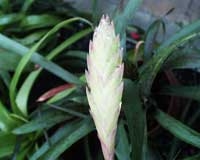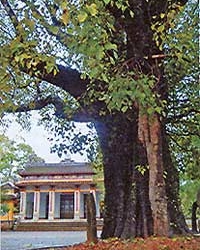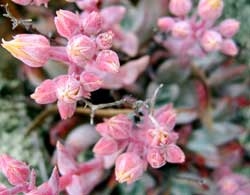In the list of 10 fruits voted as the most delicious and rare in the world, five types of fruit can be found in Vietnam, with three originating from Southeast Asia and have been cultivated in our country for a long time. Can you guess which fruits they are?
10. Cupuaçu

Cupuaçu is the size of a small watermelon, with quite thick skin.
Cupuaçu, scientifically known as Theobroma grandiflorum, is primarily found in the wild Amazon rainforest. Additionally, this fruit is also cultivated in Peru. Cupuaçu is the size of a small watermelon, with a rather thick skin. When ripe, its flesh is a yellow color resembling that of a ripe jackfruit, with a flavor reminiscent of cacao. Due to this distinctive aroma, Brazilians often use Cupuaçu in chocolate production.
Cupuaçu is a fruit rich in vitamins B1, B2, and B3. Besides, this fruit has the ability to stimulate the immune system and reduce the risk of cardiovascular diseases. Notably, the high concentration of antioxidants found in Cupuaçu powder helps protect body tissues.
9. Cherimoya

Cherimoya flesh is soft and sweet, with a flavor reminiscent of a mix between pineapple and banana.
Cherimoya belongs to the Annonaceae family and originates from the Andes mountains between Argentina and Chile. It is one of the rare fruits primarily grown in South America. The green fruit has an oval shape and weighs about 500 grams. Cherimoya’s flesh is soft and sweet, with a flavor reminiscent of a mix between pineapple and banana.
Cherimoya is rich in vitamins, antioxidants, and minerals beneficial for the body. In medicine, Cherimoya is used to eliminate harmful factors in patients. Additionally, it helps regulate blood pressure and maintains a good heart rhythm.
8. Mangosteen

Mangosteen contains the highest level of xanthones, which have anti-inflammatory and antibacterial effects.
Mangosteen is a tropical fruit belonging to the Garcinia family, native to Malaysia, and is popular in Southeast Asia. In Vietnam, there are mangosteen orchards that are hundreds of years old, preserved by the people of Lai Thieu (Binh Duong). When ripe, the fruit has a dark red, thick skin, with calyx leaves at the bottom and a crown-like apex. Each fruit typically contains six seeds, surrounded by edible flesh with a sweet and tangy flavor, and a mild aroma.
Mangosteen contains the highest level of xanthones, which have anti-inflammatory and antibacterial properties, preventing cancer. The medicinal properties of this fruit are also applied to prevent various diseases such as cardiovascular issues, diabetes, diarrhea, urinary problems, and stimulate the immune system.
7. Miracle Fruit

Miracle fruit, also known as the miracle berry.
Miracle fruit, also known as the miracle berry, is red in color and originates from the tropical rainforests of West Africa. The miraculin (glycoprotein) component in Miracle fruit can transform all flavors from sour, astringent, or bitter to sweet. Meanwhile, the taste of Miracle fruit is a mix of sweet, sour, and bitter, reminiscent of the flavor of cranberries.
In medicine, doctors use the sweet effect of this fruit to mask metallic tastes in the mouths of cancer patients undergoing chemotherapy while stimulating their taste buds. Additionally, it serves as a sugar substitute for diabetic patients or those on a diet. In Vietnam, this fruit, known as the miracle berry, has been introduced and cultivated for about a decade.
6. Durian

Durian has a thick skin with sharp spines; when ripe, its flesh is bright yellow, with a strong characteristic odor.
Seasonal durian is known as the “king of fruits” throughout South Asia. This fruit originates from Indonesia and Malaysia, with its most famous variety in Vietnam coming from Cai Mon, Ben Tre. Durian has a thick skin with sharp spines; when ripe, its flesh is bright yellow and has a strong characteristic odor. However, due to its pungent smell, this fruit is banned in public areas in countries like Singapore, Thailand, China, and Japan.
Durian is considered a highly nutritious fruit, rich in potassium, iron, copper, and significant vitamins. It helps control blood pressure, regulates heart rhythms, and is particularly effective in preventing aging. Additionally, durian is enjoyed as an instant refreshment due to its simple sugars.
5. African Horned Cucumber

African Horned Cucumber, also known as Kiwano.
African Horned Cucumber, also known as Kiwano, is listed among the oldest fruits in the world. Historical records show that this fruit appeared 3,000 years ago in Africa, primarily developing in South Africa, California (USA), and New Zealand. It is nicknamed “horned melon” because when ripe, it has a yellow skin with many protruding horns, while the inside is green with a tart flavor. The taste of this fruit is said to combine flavors of lemon, banana, and cucumber.
In fact, this cucumber is considered a traditional food that ensures food security in Africa. Its juice helps reduce acidity and eczema in the body. Additionally, eating a lot of horned cucumber aids in diuresis, addresses urinary issues, and regulates blood pressure.
4. Jabuticaba

Instead of growing on vines, Jabuticaba grows directly on the trunk of the tree.
Jabuticaba, scientifically known as Plinia cauliflora, is found in South American countries such as Brazil, Paraguay, and Argentina. Instead of growing on vines, the fruit grows directly on the trunk of the tree. Initially, the fruit is green, then turns pink, and when ripe, it is a juicy purple. The flesh inside Jabuticaba is white, very fragrant, and sweet.
This fruit is primarily used in baking products, jams, and wines. It can also heal ailments such as diarrhea and asthma. Scientists believe Jabuticaba may cure certain types of cancer, and they are continuing to conduct further research on the medicinal properties of this unique fruit.
3. Physalis

In Vietnam, Physalis grows wild everywhere.
Physalis, also known as lantern plant or tomatillo, belongs to the Solanaceae family and originates from the tropical regions of the Americas, later becoming intertropical. In Vietnam, it is not known when it was introduced, but it grows wild everywhere, on rice field edges, grassy areas, wastelands, or along country roads…
The fruit is smaller than a tomato, with smooth, round, and juicy skin, covered by a thin, veined husk. Physalis has a bitter taste, is cooling, and is non-toxic. This is one of the fruits with many beneficial medicinal properties, used as a special herb in some traditional remedies. Its cooling properties help clear heat, reduce phlegm, and treat ailments such as fever. Regularly eating Physalis also stimulates your immune system.
2. Rambutan

Rambutan is very rich in vitamin C, copper, manganese…
Rambutan originates from Southeast Asia, and the people of Malaysia call it Rambut (meaning “hair”). When ripe, the rind of Rambutan turns orange-yellow or red, depending on the variety. The flesh is white, sweet, and slightly tangy. The Rambutan tree thrives in non-flooded areas, so in Vietnam, it is primarily cultivated in provinces within the Đồng Nai River basin, southern Central Vietnam, and the Mekong Delta.
According to recent studies, Rambutan is very rich in vitamin C, copper, manganese, and trace minerals such as potassium, calcium, and iron. Notably, Rambutan helps prevent cardiovascular diseases, combats fatigue, alleviates pain, and supports gum health. Additionally, the fiber content in this fruit helps the body easily eliminate waste, prevent appendicitis, kidney stones, hemorrhoids, and colon cancer…
1. Ackee

In African countries, Ackee is used as a side dish with vegetables.
Ackee is one of the rarest fruits in the world, originating from the tropical regions of West Africa. Ackee belongs to the Sapindaceae family (the soapberry family) and is also the national fruit of Jamaica. When ripe, the Ackee fruit changes from green to a bright orange-yellow and splits open to reveal three large, shiny black seeds surrounded by a soft, fluffy flesh that is either white or yellow. In various African countries, Ackee is commonly eaten as a side dish with vegetables.
This fruit is known for its ability to eliminate cholesterol and fatty acids, making it popular among those looking for weight loss food options. However, the seeds of the Ackee contain the toxin hypoglycin, which is the reason why the United States has banned the import of Ackee fruits.




















































